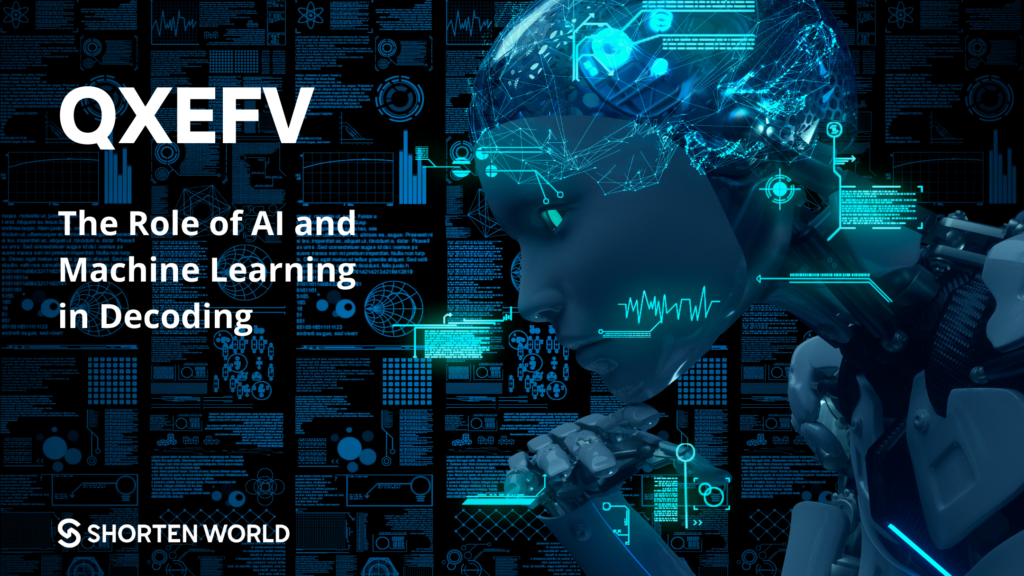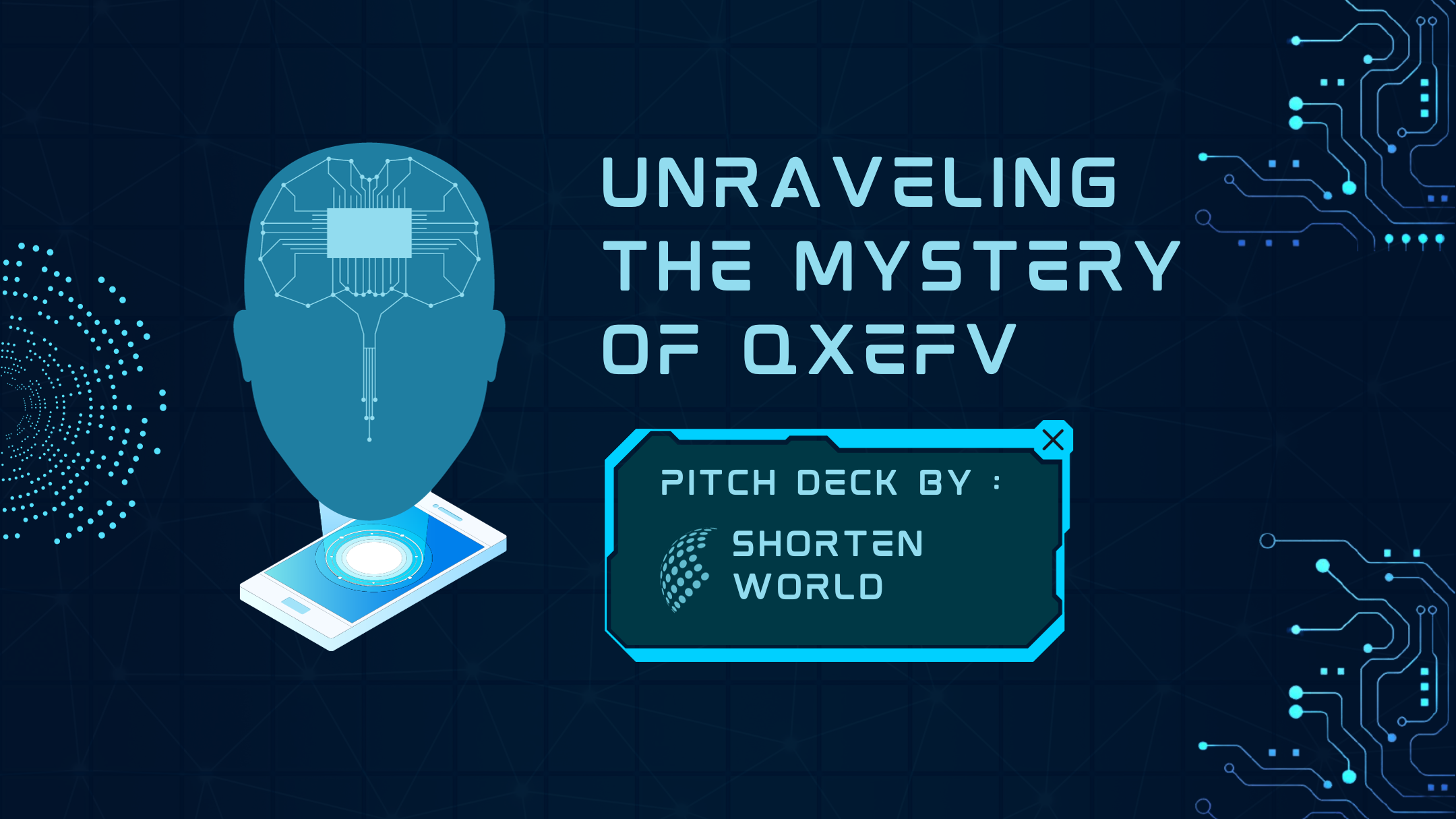QXEFV Introduction
Mystery and intrigue have surrounded cryptic codes and sequences throughout history. From the enigmatic Rosetta Stone to the uncracked Voynich manuscript, humans have long been fascinated with deciphering the undecipherable. In this spirit, we present a curious case study of a cryptic sequence known as QXEFV. This article aims to explore the significance, methodologies, and applications of decoding such mysterious sequences, with QXEFV serving as our focal point.
The Fascination with Codes and Sequences
Since ancient times, codes and sequences have been pivotal in secure communication, hidden messages, and complex data representation. The art of cryptography, which is the study of encoding and decoding information, has evolved dramatically with technological advancements. The use of cryptic codes has been documented in warfare, espionage, and even in the digital realm of cybersecurity.
Historically, famous examples include the Caesar cipher used by Julius Caesar to communicate with his generals, and during WWII, the Enigma machine codes used by the Axis powers, which were eventually deciphered by the Allies. These instances underscore the critical role that understanding and decrypting codes has played in shaping human history.
Deciphering QXEFV: Theoretical Approaches
Without a clear definition or origin, QXEFV appears as a random string of characters. However, to a cryptanalyst, it's a puzzle waiting to be solved. The process of deciphering such codes typically involves several theoretical approaches:
- Pattern Recognition: This involves looking for repeating sequences, common linguistic structures, or familiar patterns that might indicate a language or code system.
- Statistical Analysis: By analyzing the frequency of each character or group of characters, cryptanalysts can make educated guesses about the type of code or language used.
- Cryptographic Techniques: These might include trying known cipher algorithms or creating custom scripts to attempt brute force or more sophisticated attacks based on the assumed complexity of the code.
URL shortener in QXEFV
In the digital world of QXEFV, a realm known for its advanced technology and cryptic languages, the URL shortener stands as a monumental invention. Here, URLs aren't just links; they are complex sequences of characters that hold the secrets to vast libraries of knowledge and portals to different dimensions within the QXEFV universe. As explorers and scientists navigate the web of interconnected realms, the need for a concise and efficient way to travel through information becomes imperative.
Enter the QXEFV URL shortener, a tool not merely of convenience but of necessity. Crafted from the enigmatic QXEFVian code, it is capable of compressing the longest of links into a mere handful of characters, all while enhancing the security and speed of travel through the virtual space. Each shortened URL is encrypted with layers of QXEFVian ciphers, ensuring that only those with the right decryption keys can access the hidden contents behind these mystical links.
But the URL shortener in QXEFV is more than a tool; it's a gateway to wonders. Scholars use it to share ancient wisdom encoded in the digital archives, while adventurers use these condensed links to leap between worlds in their quests. Rumors even speak of a hidden dimension, accessible only through a specific shortened URL that constantly shifts its form, eluding even the most skilled codebreakers of QXEFV.
In the world of QXEFV, the URL shortener isn't just a mundane utility. It's an artifact of power and mystery, integral to navigating and uncovering the endless wonders of the digital cosmos.
QXEFV in Popular Culture and Media
While QXEFV itself might not be a known entity in popular culture, the fascination with cryptic sequences certainly is. Films like "The Imitation Game" depict the thrilling chase to decode enemy communication during war, while books and shows are rife with the use of secret codes as plot devices. In a fictional context, QXEFV could represent an alien communication, a secret society's greeting, or an unsolved riddle left by an eccentric author.
Comparison with famous cryptic sequences in literature and movies.
In literature and movies, cryptic sequences include:
- The Voynich Manuscript: An illustrated codex hand-written in an unknown writing system, considered to be one of the most mysterious documents in the world.
- The Zodiac Killer's Ciphers: The Zodiac Killer sent several ciphers to newspapers, some of which have not been fully decoded, and became central to the mystery surrounding the case.
- Linear A Script: An undeciphered script used in ancient Crete; while not from literature or movies, it has inspired various fictional depictions of undeciphered languages.
- The Enigma Code: Used by the Germans in World War II and famously deciphered by Alan Turing and his team, it has been depicted in various films and books.
- Rongorongo: A system of glyphs discovered on Easter Island, undeciphered but often referenced in literature and documentaries for its mysterious nature.
These sequences or codes typically share a few common traits:
- Mystery and Intrigue: They are often not understood or only partially deciphered, leading to various theories and interpretations.
- Cultural or Historical Significance: Many have historical significance or are tied deeply into the culture or period they originate from.
- Complexity and Depth: They usually possess a level of complexity that challenges experts and enthusiasts alike, often requiring specialized knowledge to even approach deciphering them.
QXEFV: The Role of AI and Machine Learning in Decoding
The sequence "QXEFV" is not recognized as a standard or widely-known cryptic sequence in literature, movies, or cryptographic history, and there's no readily available information suggesting that it's a significant topic in these fields or in the domain of AI and machine learning. However, discussing the role of AI and machine learning in decoding cryptic sequences more broadly can shed light on how these technologies might approach a sequence like "QXEFV" if it were a subject of study.

- Pattern Recognition: AI, particularly machine learning algorithms, excel at recognizing patterns in data. If QXEFV were a cryptic sequence or part of a more extensive code, machine learning algorithms could be used to analyze the sequence and identify patterns or repetitions that might suggest a method of encryption or hint at its meaning.
- Natural Language Processing (NLP): For sequences that are encoded with linguistic elements or have language-like structures, NLP can be a powerful tool. AI systems equipped with NLP capabilities can attempt to understand, interpret, and translate the sequence by comparing it to known languages or linguistic patterns.
- Cryptanalysis: AI has been used in cryptanalysis, the study of analyzing information systems to break cryptographic codes. By training on known cryptographic methods and using techniques like brute force (testing all possible keys) or more sophisticated methods, AI can be used to attempt to decrypt messages. The success of such endeavors varies greatly depending on the complexity of the encryption and the amount of information available.
- Collaborative Problem-Solving: AI can also assist in creating platforms for collaborative problem-solving, where both humans and AI work together to decipher complex codes or sequences. This is particularly useful in cases where human intuition and creativity are beneficial, and the computational power and speed of AI can be leveraged to test hypotheses or perform repetitive tasks.
- Learning from Context: If QXEFV were part of a larger text or had additional context available, machine learning algorithms could use that context to make inferences about the sequence. This might involve looking at the sequence in relation to the whole text, understanding the historical and cultural background, or even comparing it to other known codes or languages.
It's important to note that while AI and machine learning can be powerful tools in decoding and understanding mysterious sequences, their effectiveness is highly dependent on the nature of the code, the quality and quantity of data available for training, and the specific techniques used. For some codes, particularly those that are heavily based on context, nuance, or have been designed to be resistant to analysis, human cryptographers and codebreakers remain an essential part of the process. In any case, AI and machine learning are valuable tools in the cryptographer's toolkit, offering a range of methods to approach and potentially solve complex and mysterious sequences like "QXEFV."
Real-World Applications of Decoding Cryptic Sequences QXEFV
Here are several real-world applications for decoding cryptic sequences:
- Military and National Security: Throughout history, nations have used coded messages to hide military secrets. Decoding enemy codes can provide critical intelligence. For example, the decoding of the Enigma machine in World War II was pivotal for the Allied victory.
- Cybersecurity: Modern encryption methods are essential for securing digital communications. Cryptanalysis, or the art of code-breaking, is crucial in testing the strength of these encryption methods and ensuring that sensitive data remains protected from unauthorized access.
- Forensics and Law Enforcement: Decoding cryptic messages can be vital in criminal investigations, especially in cases involving complex conspiracies, terrorist activities, or mysterious threats. It's a tool used to uncover plans, identify perpetrators, or solve crimes.
- Archaeology and Linguistics: Deciphering ancient scripts and languages helps historians and archaeologists understand past cultures and civilizations. For example, the decoding of Egyptian hieroglyphs with the Rosetta Stone was a breakthrough in Egyptology.
- Genetics and Medicine: In a broader sense, the "code" of DNA is a cryptic sequence with immense implications. Deciphering the human genome has advanced our understanding of genetics, disease, and biology, leading to new medical treatments and insights into human evolution and development.
- Data Analysis and Big Data: Cryptic sequences can sometimes be patterns or anomalies hidden within large datasets. Decoding these sequences is a part of data analysis, helping to uncover trends, predict behaviors, and make better decisions in fields ranging from finance to healthcare.
- Puzzles and Entertainment: Finally, cryptic sequences are often used in puzzles, games, and entertainment, challenging people to solve them for enjoyment, education, or even as part of marketing campaigns. While not always "real-world" in a practical sense, they engage millions of people and can lead to community-building and educational opportunities.
While these applications don't directly address "QXEFV," they reflect the broader significance of decoding cryptic sequences. Whether it's for securing communications, solving historical mysteries, or understanding biological codes, the practice of deciphering complex codes is a valuable and often essential endeavor across multiple disciplines and industries.
Conclusion of QXEFV
The sequence "QXEFV" doesn't appear to have a recognized or documented presence in the fields of literature, cryptography, or popular culture based on the information available. It may not be a known cryptic sequence or have notable real-world applications or historical significance in the way that other famous codes or sequences do. However, discussing it in the context of cryptic sequences broadly allows for an appreciation of the various applications and impacts that code-breaking and sequence decoding have in numerous fields.
Cryptic sequences, whether they are historical codes, modern encryption methods, or part of linguistic puzzles, hold significant importance in military strategy, national security, cybersecurity, forensics, archaeology, genetics, and entertainment. The process of decoding these sequences involves a combination of linguistic skill, mathematical prowess, technological tools, and often a deep understanding of the cultural or historical context.
While "QXEFV" itself might not be an example of such a sequence, the general interest in and discussion around cryptic codes highlight the human fascination with mystery, the intellectual challenge of solving complex puzzles, and the practical need to understand and secure information. Whether in real-world applications or as an engaging hobby, the decoding of cryptic sequences remains an important and intriguing field that combines various disciplines and touches many aspects of our lives.
We are Shorten World who providing Link Shortener tool to generate a shortened link. We also support Link In Bio and QR Code Generator, you can create link-in-bio page to share on social network more attractive for free
